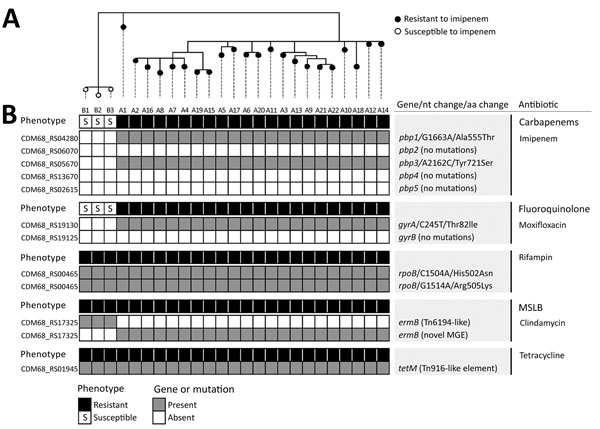Volume 24, Number 4—April 2018
Dispatch
Imipenem Resistance in Clostridium difficile Ribotype 017, Portugal
Figure 1

Figure 1. Phylogeny of Clostridium difficile RT017 isolates from hospitals A and B and genetic determinants of antimicrobial drug resistance, Portugal. A) Core genome single-nucleotide polymorphism–based neighbor-joining phylogeny of 25 RT017 C. difficile clinical isolates reconstructed by using 47 variant sites (outside MGEs) identified when mapping to either the corresponding genomic sequence of close relative C. difficile strain M68 (GenBank accession no. NC_017175) or a draft genome sequence of a representative clinical isolate. B) For each isolate, the profile of antimicrobial drug susceptibility is indicated together with respective potential genetic determinants of antimicrobial drug resistance. Only antimicrobial drugs for which a resistant phenotype was observed are displayed. Gene locus tags are relative to the C. difficile M68 genome annotation. Both nucleotide and amino acid replacements refer to mutations in the resistant isolates when comparing with susceptible isolates. No mutations means that no mutations are present differentiating resistant isolates of hospital A from susceptible isolates of hospital B, although mutations are present relative to M68. Both the pbp5-carrying region and the ermB gene (present in all isolates) were found to be inserted in distinct genomic contexts (Technical Appendix). MSLB, macrolide/lincosamide/streptogramin B; MGE, mobile genetic element.